“Learn some interesting facts,
and See the City with other Eyes”
Paris is a masterpiece.
Across more than 2 millenniums of history, the city accumulated a cultural heritage like very few other places in the world. Just randomly strolling around Paris streets, is already an art tour by itself, a journey of discovery and a jump through the ages combined.
No matter how good you’ll plan your visit though, know that in Paris there’s always something more than what meets the eye.
In this post, I’ll share with you the Top 10 curious Facts and Trivia about Paris I discovered, which would be hard to find out when casually walking around and which I believe, can greatly enhance your visiting experience and feel of the city.
Get ready to be amazed;)
Let’s get started!
1. “Lutetia” is the Former Name of Paris
“Lutetia” (or in Latin “place near a swamp”) was the former name of the first Roman fortification on the little island in the middle of the Seine (today Ile de la Cite) given to it during the 1st century B.C.
After the fall of the Roman Empire, the town’s slowly started expanding further away from the banks of the Seine and its name began shifting into “Paris”, inspired by the Gaul tribe of the “Parisii” who took control of the settlement.
2. Paris “Twin City” is Rome
“Only Paris is worthy of Rome; only Rome is worthy of Paris” was the motto that pushed the two European Capitals of Rome and Paris to become Exclusive Twin Cities of one another in 1956.
Although the “Twin City” status holds a greater symbolic value rather than a practical one, the friendship between the “City of Lights” and the “Eternal City” brought also few benefits for the inhabitants of the two cities.
Indeed, residents of Rome can enter in many museums in Paris for free and the same goes for the Parisienne citizens in the opposite way; not bad at all given the amount of masterpieces the two cities have to offer!
3. Paris has its own Statue(s) of Liberty
Most people know that the American Statue of Liberty was built in France and gifted to the US in 1885 to celebrate the 100th of US independence.
What most don’t know though, is that it was not the only statue of liberty ever built. actually far from it! The US statue is the largest one of its kind, but several smaller replicas are spread out all over the globe (even Tokyo has one!).
The city of Paris has three of them, located in the Musee d’Orsay, Musee des Art et Metiers and the most famous, just South of the Tour Eiffel on Île aux Cygnes.
4. Place de la Concorde is also
an Enormous Sundial
At one end of the Champs Elysees, “Place de la Concorde”, with its 7,6 hectares, is the largest square in Paris.
Built under the reign of Louis XV, the square became famous after being the execution place where the last king of France Louis XVI faced the guillotine during the French Revolution in 1793.
The statue of the king riding a horse that occupied the center of the square was torn down and a 3000 years-old and 23 meters-tall Egyptian Obelisk from Luxor took its place. At the beginning of the 20th century, people noted that the Obelisk could be used as an enormous sundial and so its construction started (although never truly ended).
Nowadays, if you pay close attention when walking around the square, you can still notice roman numbers carved in the stones of the sidewalk, the initial draft of what should have been a much larger project. Useful if you forget your watch!
5. The Nickname “City of Light”
has Two Fascinating Interpretations
Why Paris is called the “City of Light”? Nobody knows for sure when and where this nickname started, but the two most accredited explanations entwine and complete one another, conferring to the city title a whole new charm.
One on the side, the nickname “City of Light” is believed to have been given to Paris because it has been one of the first European cities to employ on a large scale public street lighting (with gas lamps before and electricity after) to lit up streets and monuments in the night.
On the other side, the “Light” of the nickname comes from the ideas of the brilliant minds of artists, writers, architects, and creators which, from Paris, influenced the world from the Age of Enlightenment moving forward.
Although the true origin of the nickname will always remain a mystery, both explanations make fundamental sense and add to the incredibly alluring aura of the city.
6. The Eiffel Tower was supposed to be
a temporary installation
In the original plan, the Tour Eiffel should have only been a temporary construction built to celebrate the 100th anniversary of the French Revolution in 1889 and, at the same time, showcase the power of France to the world during the World Fair held in Paris on the same year.
Although it was intended to last only 20 years; once built, from the height of its 324 meters, the Eiffel Tower immediately became a global cultural icon, a symbol of France and lastly, one of the most recognized structures in the world.
Given the universal fame the tower obtained in such a short time, the prestige it conferred the city and its vital function as a radio antenna for the militaries in that age, its demolition has been post-poned until being entirely cancelled.
The Tour Eiffel remained the highest structure in the world until 1930, when it was overtook by the Chrysler Building of New York.
7. Paris boast a Whooping 136 Museums
within its City Borders
Truth is, Paris is overflowing with museums.
You probably already heard about Paris world-class museums such as the Louvre, Musee D’Orsay and Centre Pompidou (if you didn’t be sure to have a look at the article Paris: the 12 Best Places you need to see).
What most people don’t know though, is that beyond the surface Paris is a huge ecosystem of small-medium museums (mostly about art) covering an incredible variety of topics and niches. If you’re planning to stay around the Paris area for more than a week, for sure you’ll find something that fits your cultural taste 😉
8. Only 10% of the Louvre Collection
is Exposed to the Public
The Louvre you see in Paris is huge.
It is almost impossible even just passing by everthing what lies behind the glass pyramid in one day, maybe you won’t even make it in two too!
What most people don’t know though, is that the ca. 35.000 pieces of art on display for the public in Louvre, are only a fraction (~10%) of the 380.000 objects that compose the full Louvre collection. That’s just overwhelming and amazing!
Bonus fact: in 2017 in the UAE opened a museum called Louvre Abu Dhabi, associated with the Parisienne world-famous museum, which exhibits part of the huge Louvre collections (as well as pieces from all major museums of Paris).
9. Paris is the City with the
5th Largest Populaton in the EU
With its 2.140.000 people, Paris is the 5th most populated city in Europe, behind only to Berlin (3,7M – Germany), Madrid (3,3M – Spain), Rome (2,9M – Italy) and Bucharest (2,15M – Romania).
The city gained one place in 2020, when the leader of the list (London, with it’s over 9M people) dropped out when UK left the European Union following the Brexit agreement (January 2020).
If we consider the whole Paris metropolitan region, then the city scores 1st in Europe, with over 12M inhabitants (almost 20% of the French population lives in the Greater Paris Region).
10. The Flag of Paris gave
the Red & Blue to the French Flag
The flag of Paris is simple rectangular vertically-divided into two halves: one blue (left side) and one red (right side). The colours, as with many other European city flags, comes from the city’s coat of arms.
Although many are the interpretations of the French Flag’s meaning, what is sure is that the colours blue and came from the Paris Flag (representing the people).
The white in-between the red and blue it’s believed to represent the monarchy (as white was the royal colour of the Bourbon house, the last royal family which ended with the French Revolution). All together, the flag symbolizes the union between the people (blue and red) and the monarchs (white) which led to the modern French democracy.
Conclusion:
Discover discover discover!
These were 10 curious facts about Paris. I hope you found them interesting and that they will help you to understand a bit more about the incredible history the city carries on its shoulders and the enourmous cultural heritage it offers to its visitors.
Do you know any other interesting fact about Paris that would be worth to mention? Let me know in the comments below, I am always excited to learn new trivia 🙂
Thanks for reading!
Paris Travel Guide
Content Summary
1) Paris: The Best 12 Places you Need to See
2) Paris: Hotspots Map and Guide to Public Transport
3) Paris: How Much it Costs to Visit?
Paris: The Best 12 Places You Need to See
"Paris is not a city, it's a World!" Imagine a city where arts and history play hides and seek behind every corner. Imagine a place where details are never overlooked but always cared for. Imagine a place where culture meets life and life meets lifestyle; where...
Paris: Hotspot Maps & Guide to Public Transport
The Hotspot MapHere is the Paris Hotspot Map that will help you navigate the city. You can click on the different pins for more information about the places. Note that I included all places from the previous article Paris: The Best 12 Places you Need to See and some...
Paris: How Much it Costs to Visit?
Paris, How much do you cost Me? Compared to many other destinations, Paris is expensive. As the capital of France and one of the most iconic and renowned cities in Europe, world's heart of high fashion and coveted destination for romantic getaways and cultural trips...
Paris: What to Pack for your Trip?
Think Fashion! Located in the hinterland of Western Europe, Paris enjoys a mild climate year-round, with temperatures getting cold but not freezing in winter (min. 3-4 C°, rarely peaks under 0°) and enjoyably warm but not scorching-hot in summer (average max. 25-28...













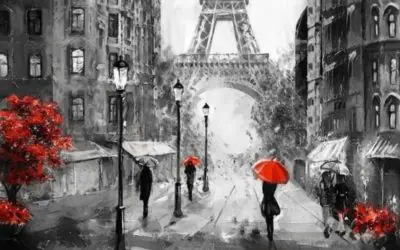
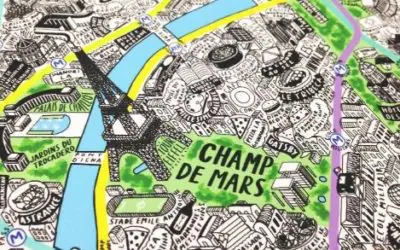
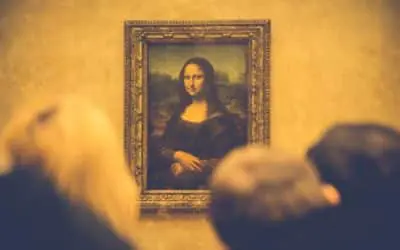






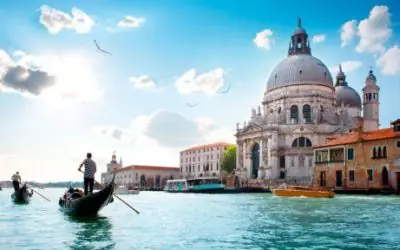

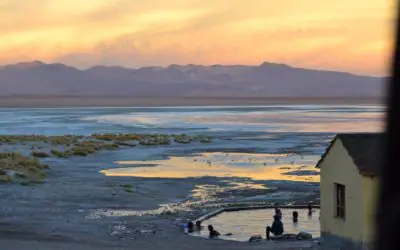
0 Comments